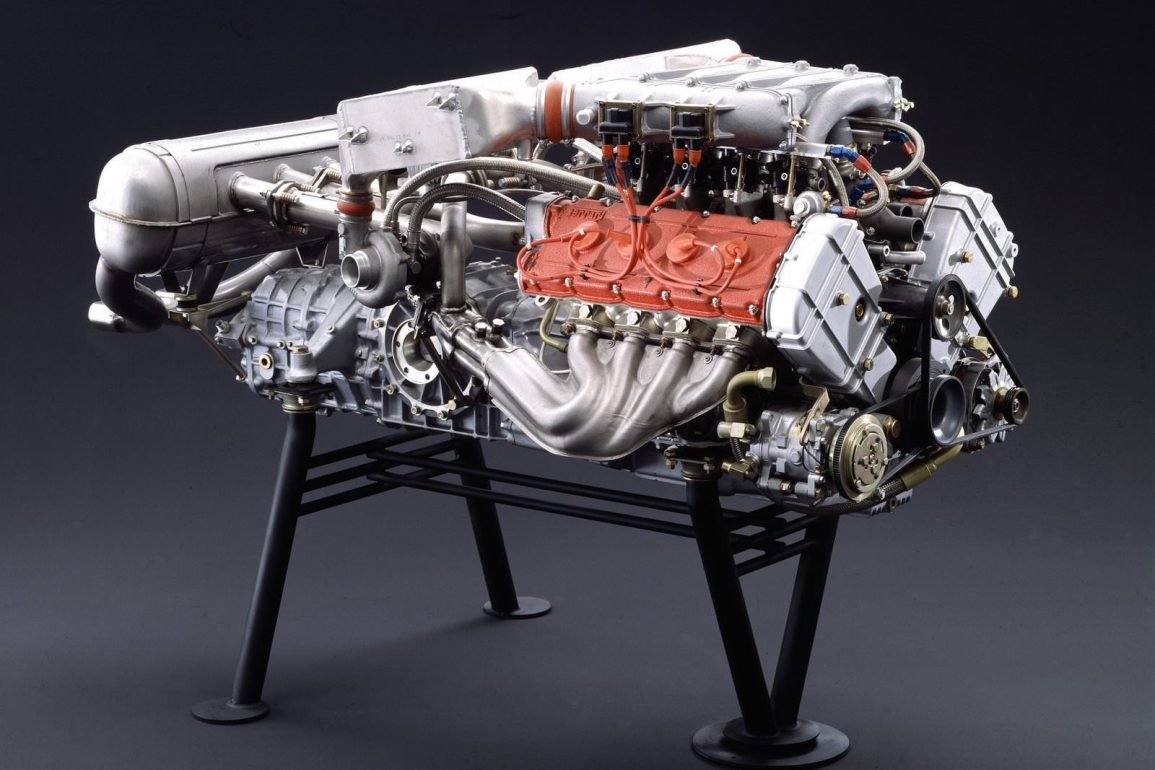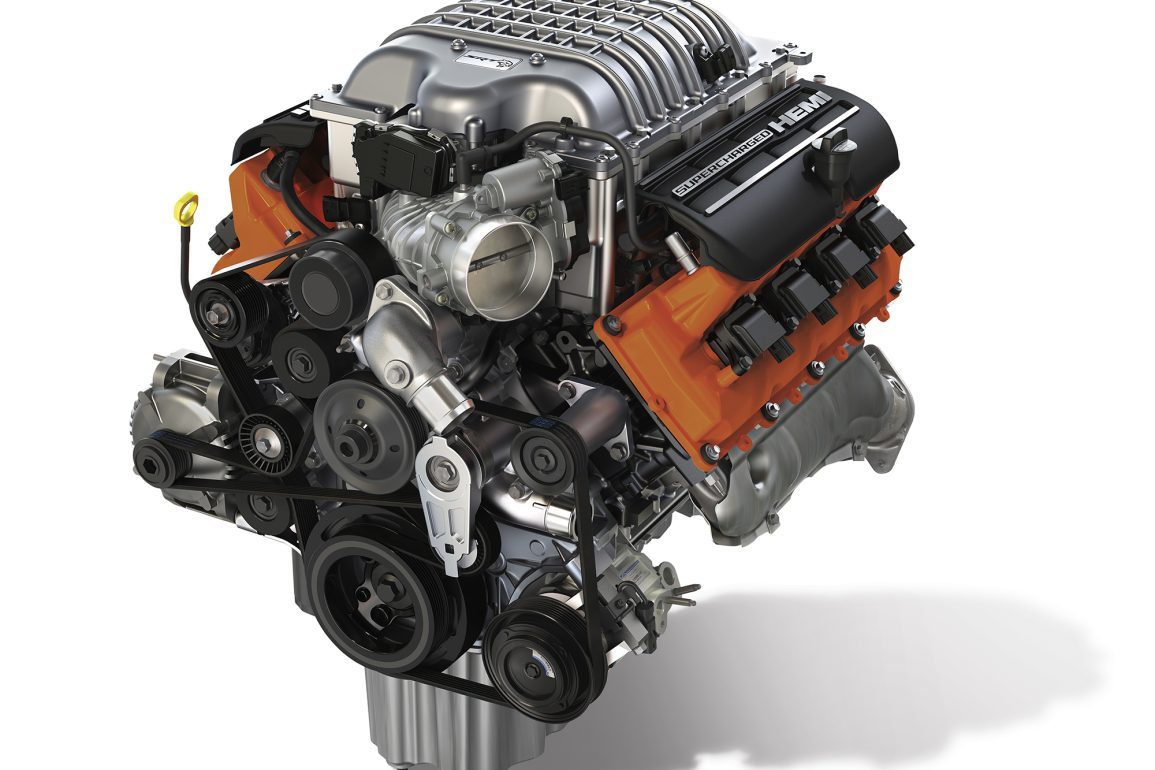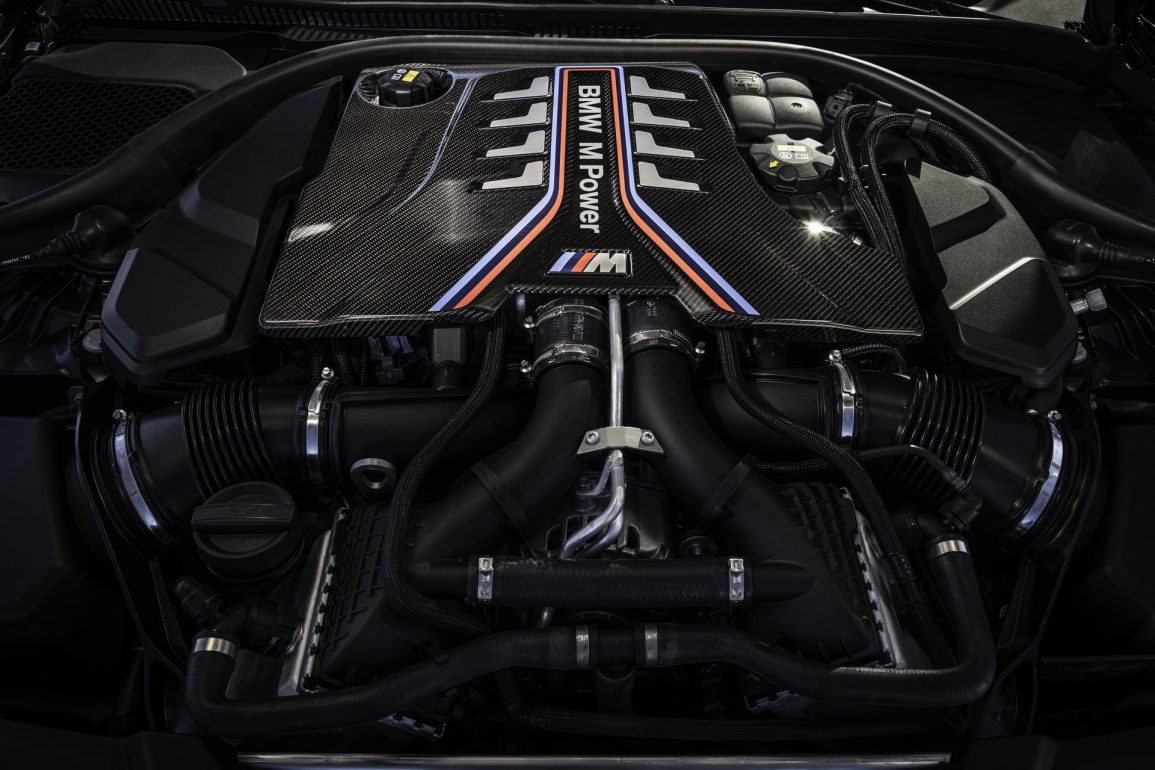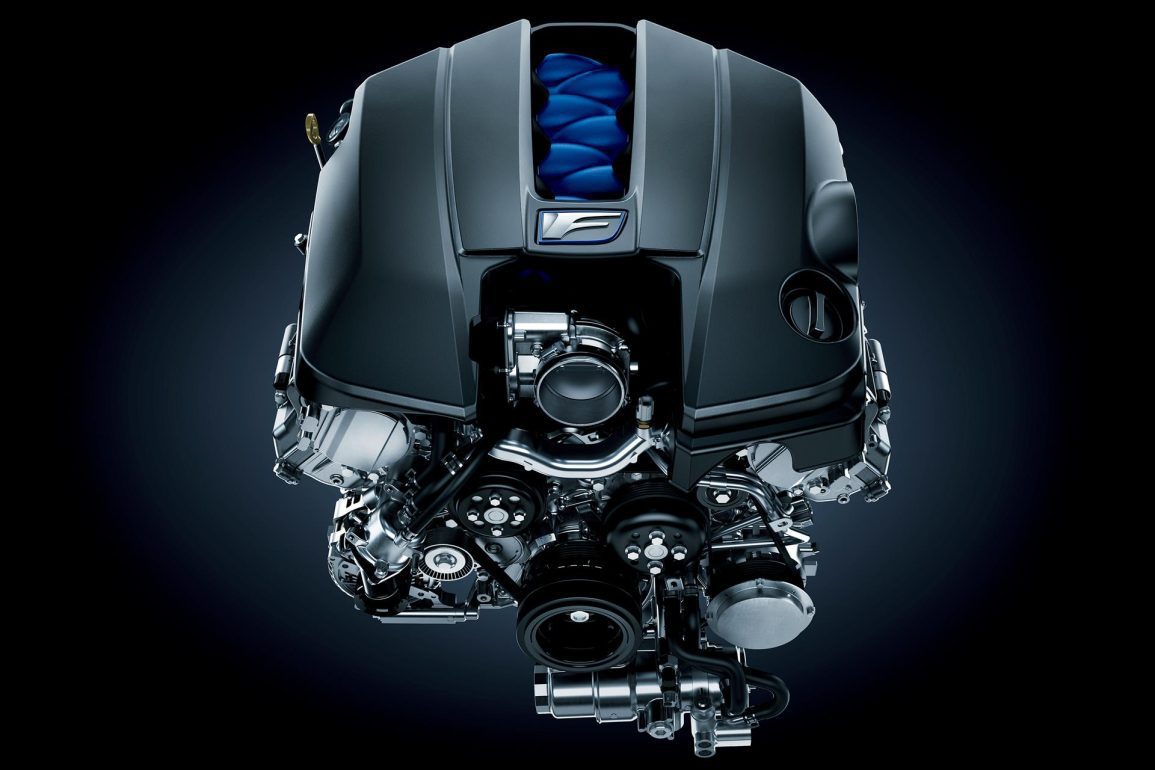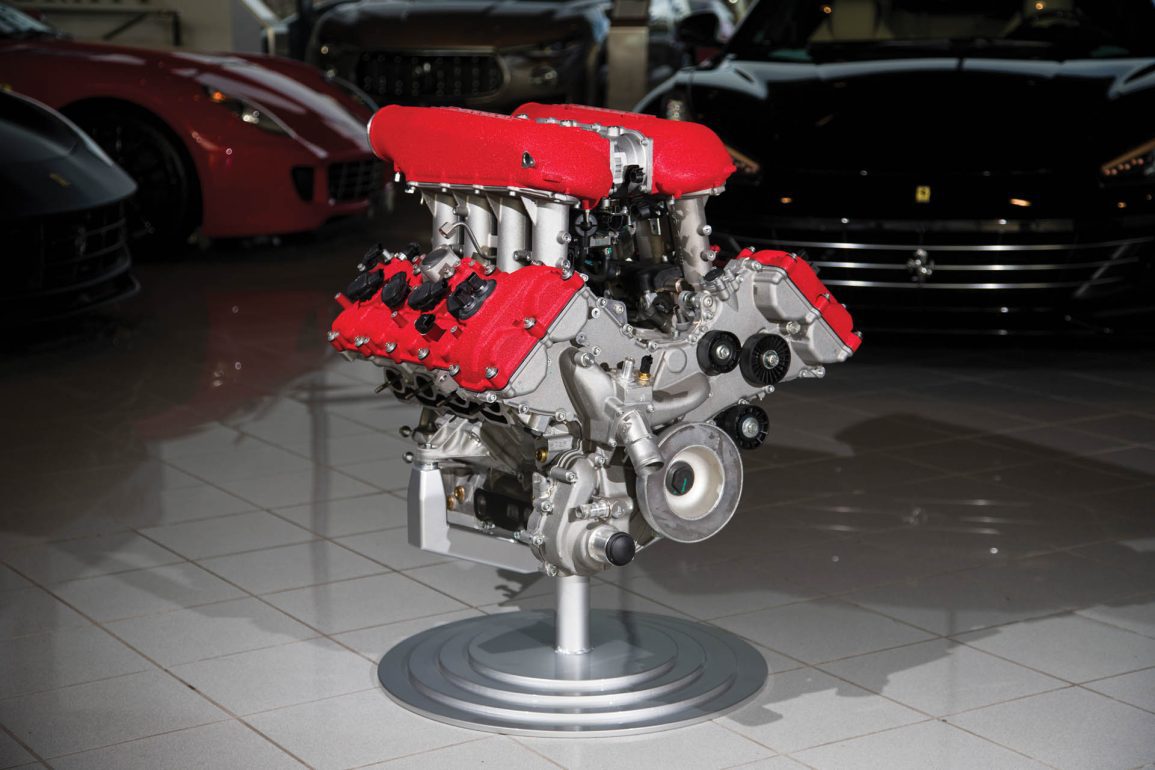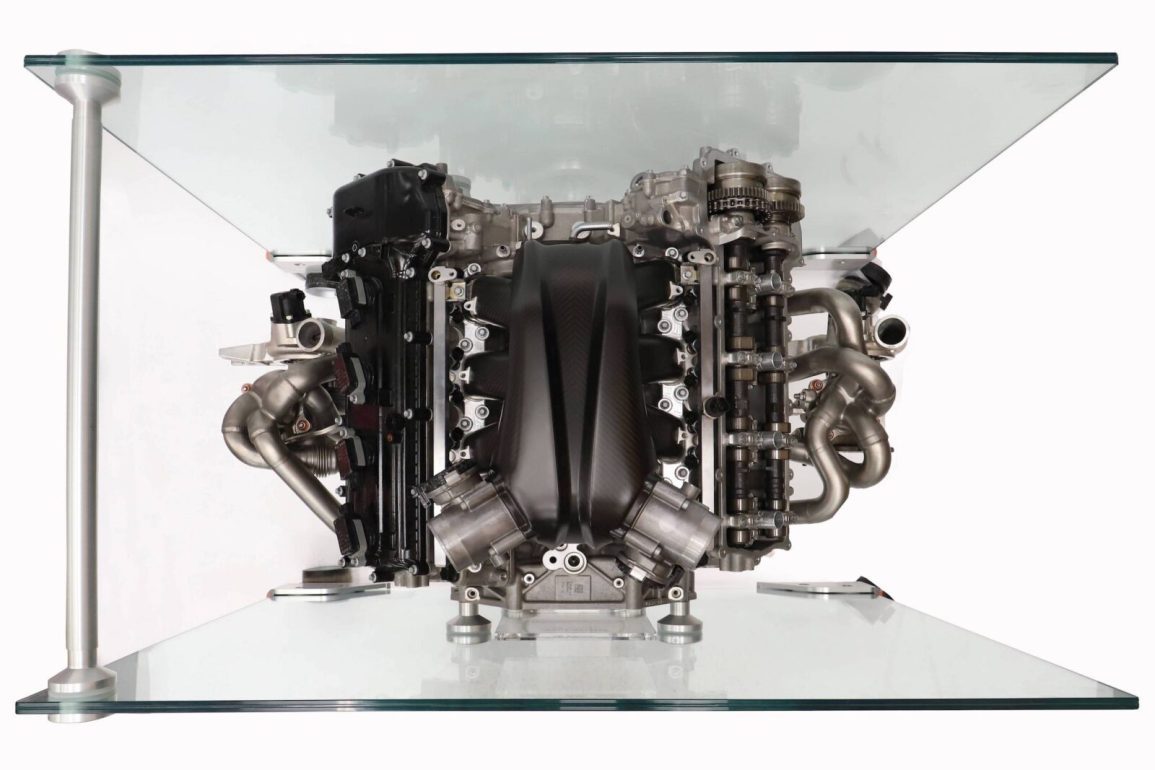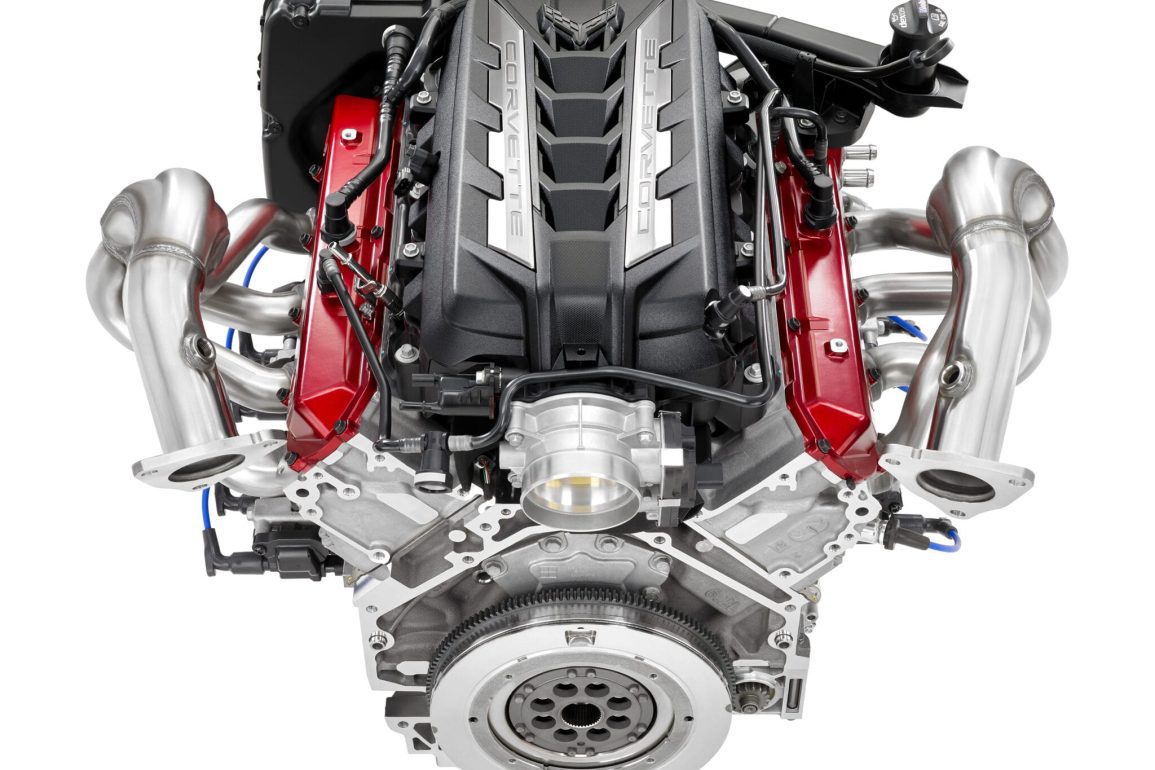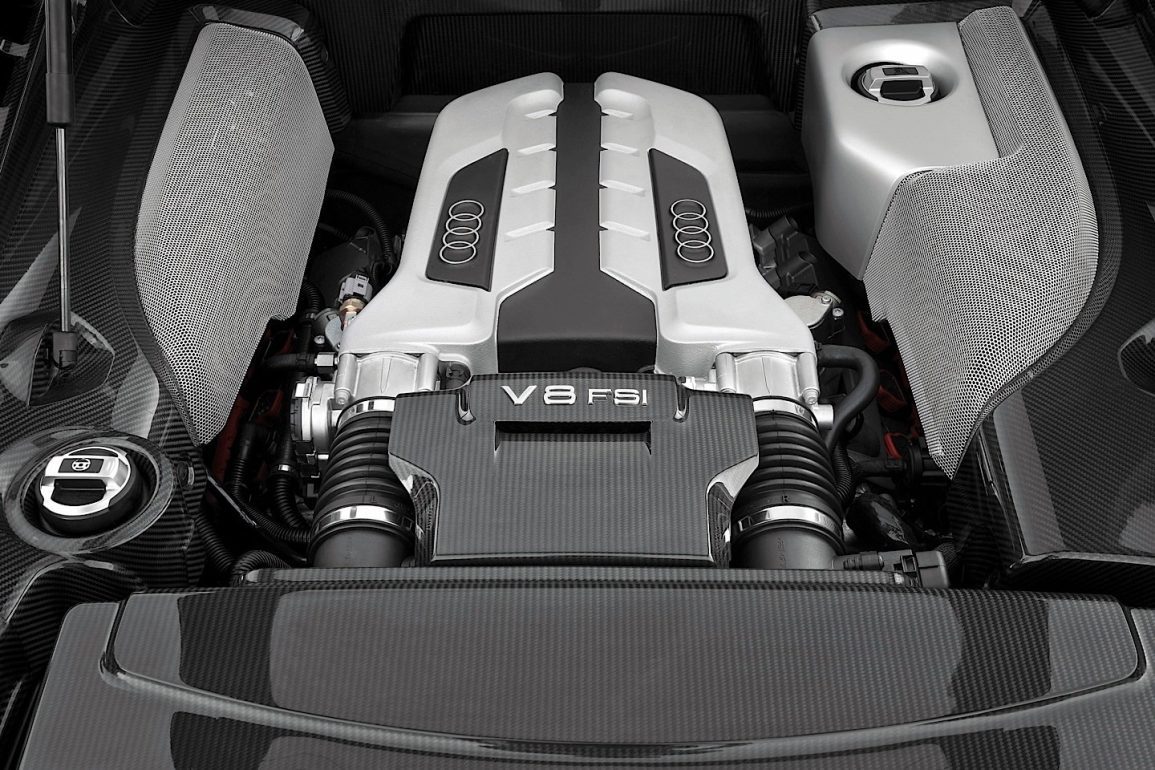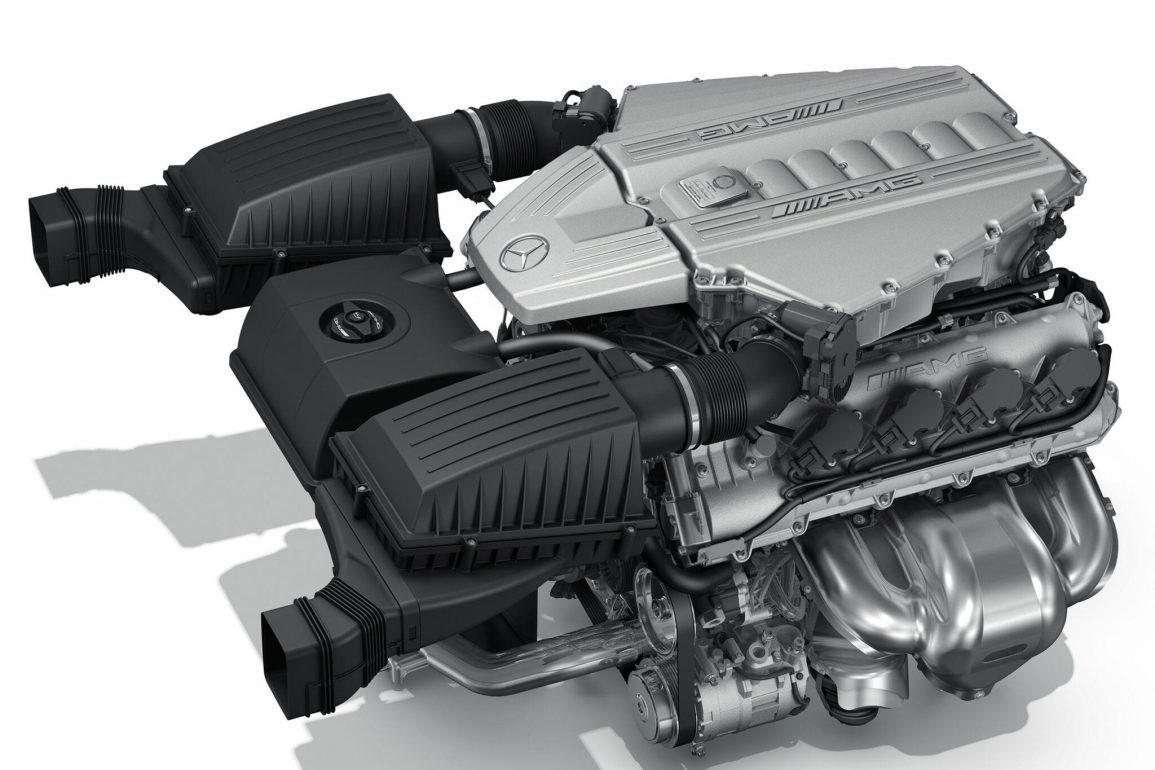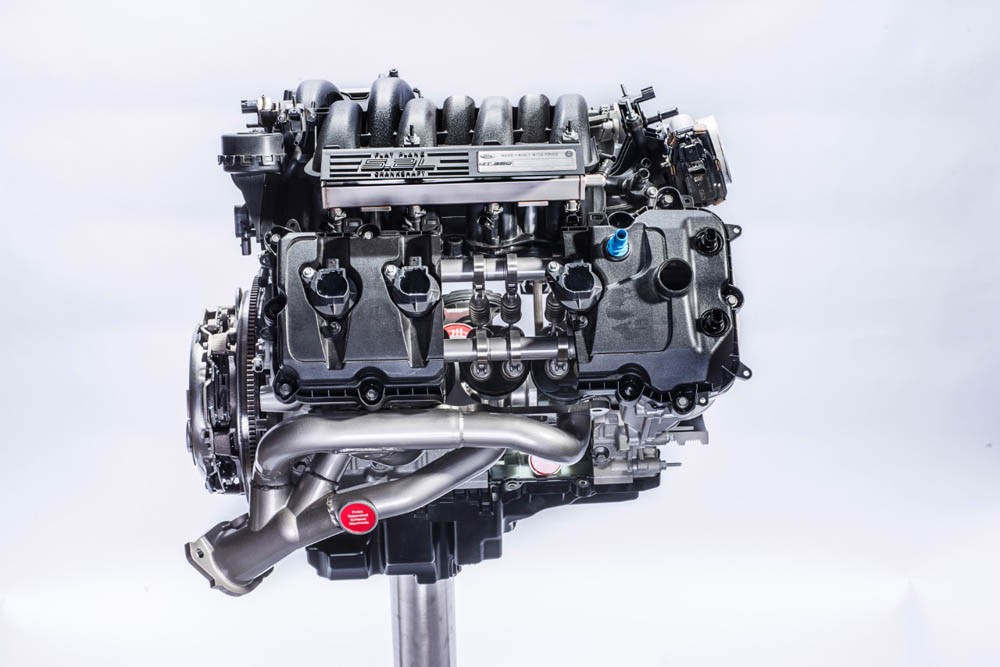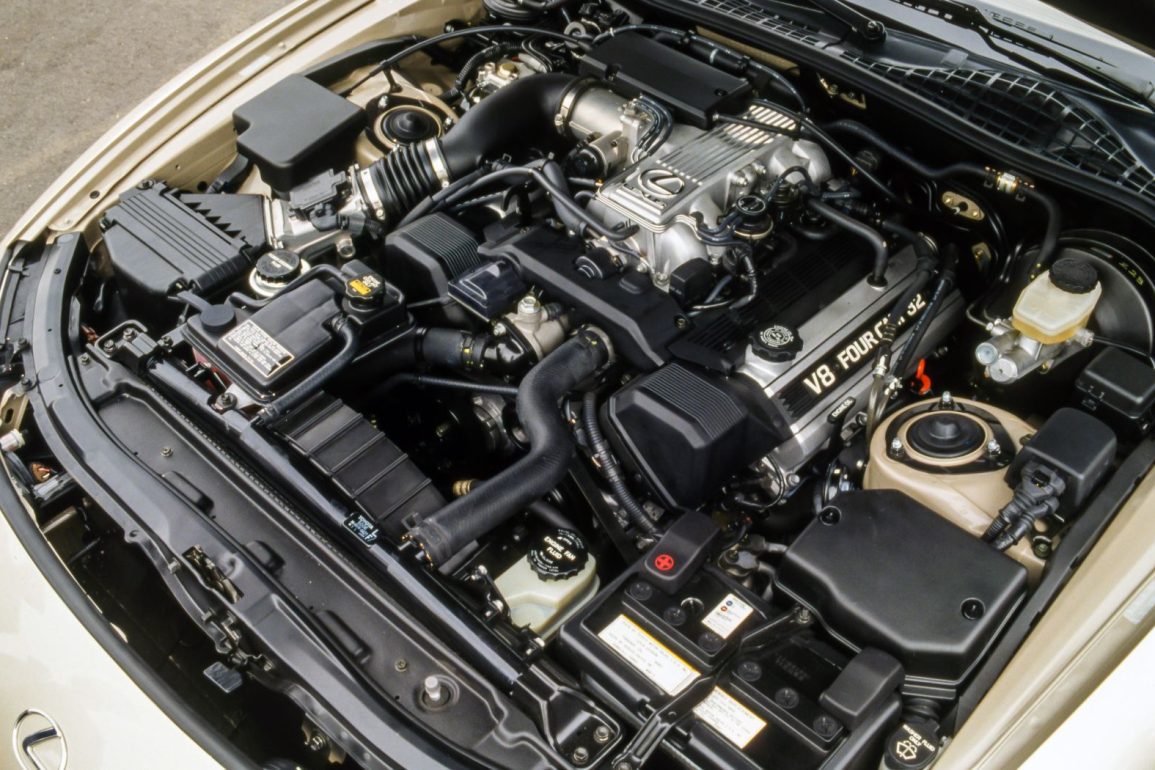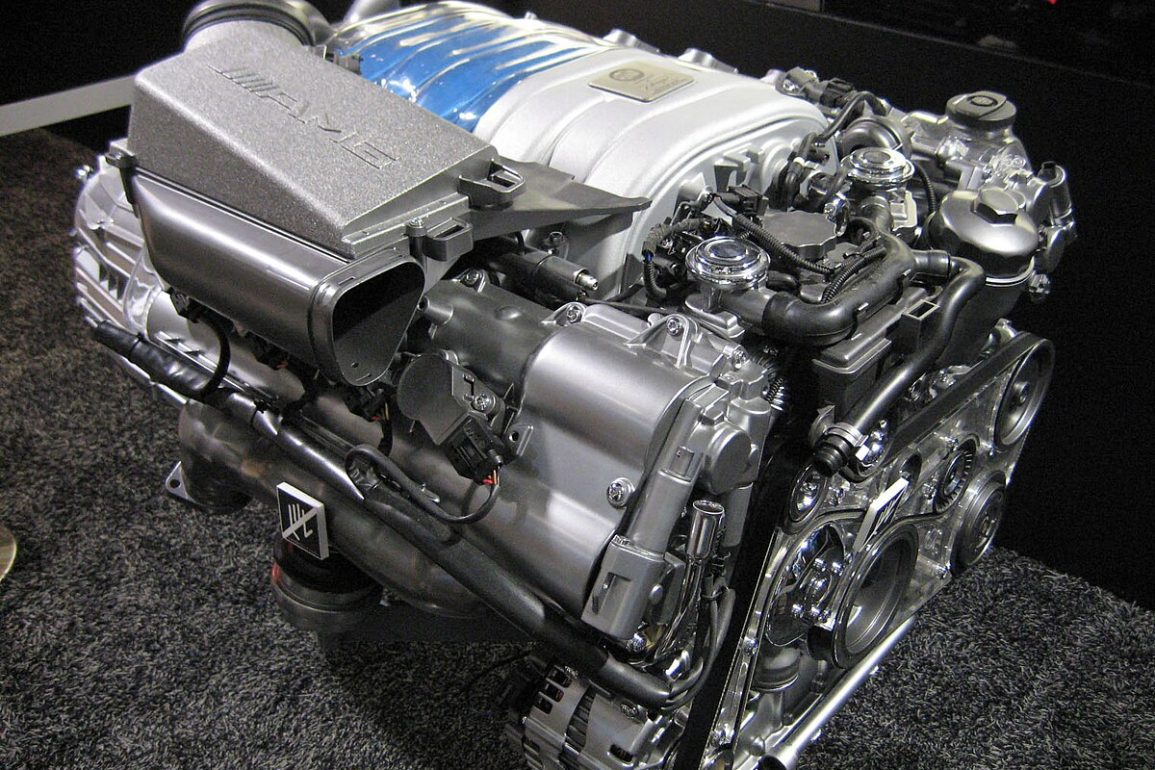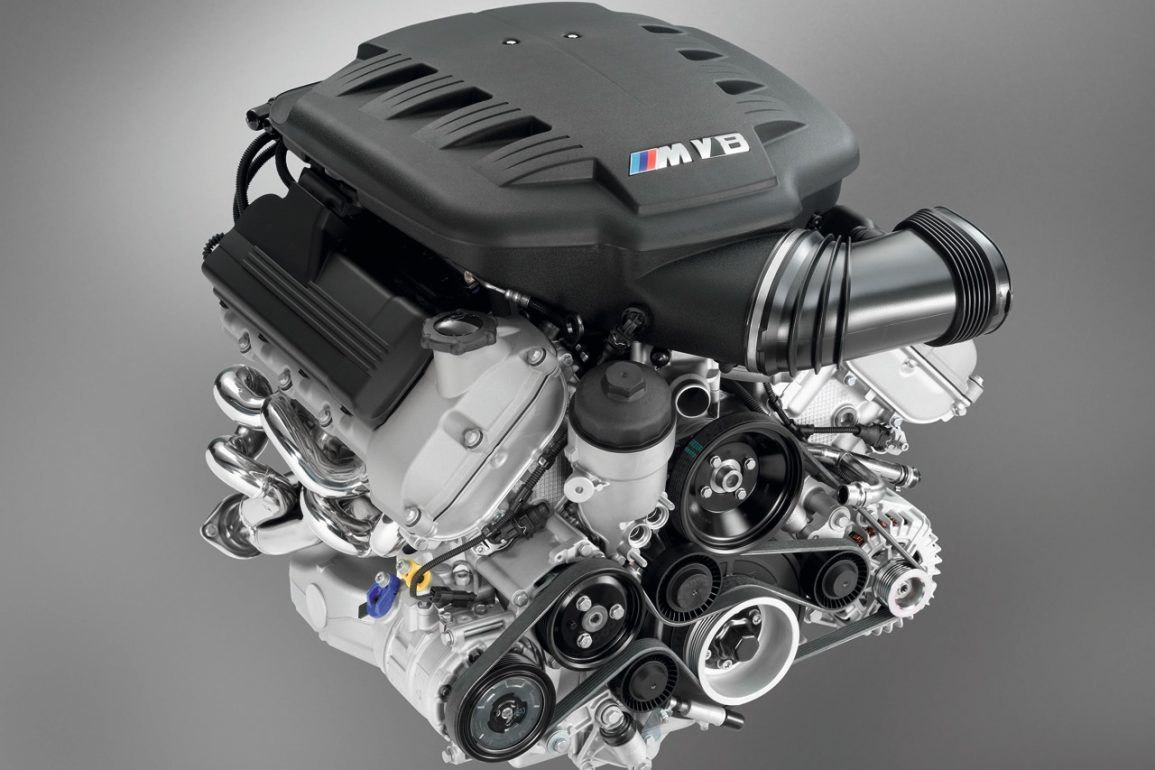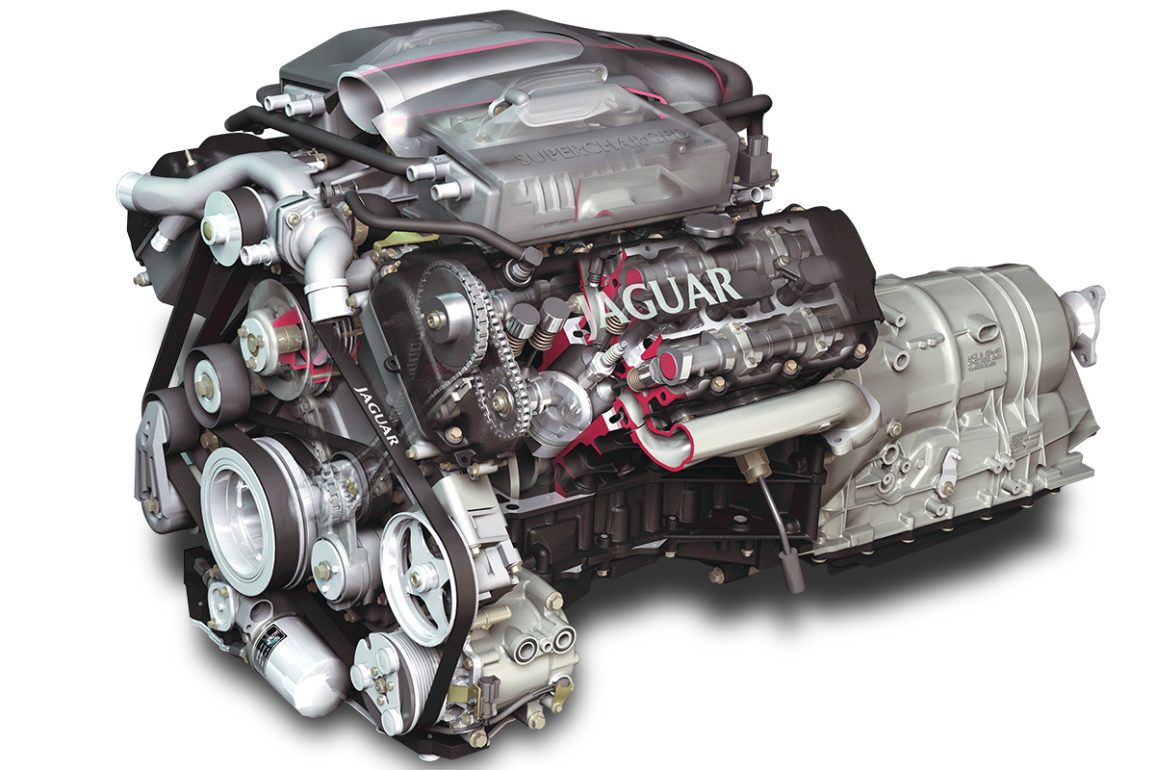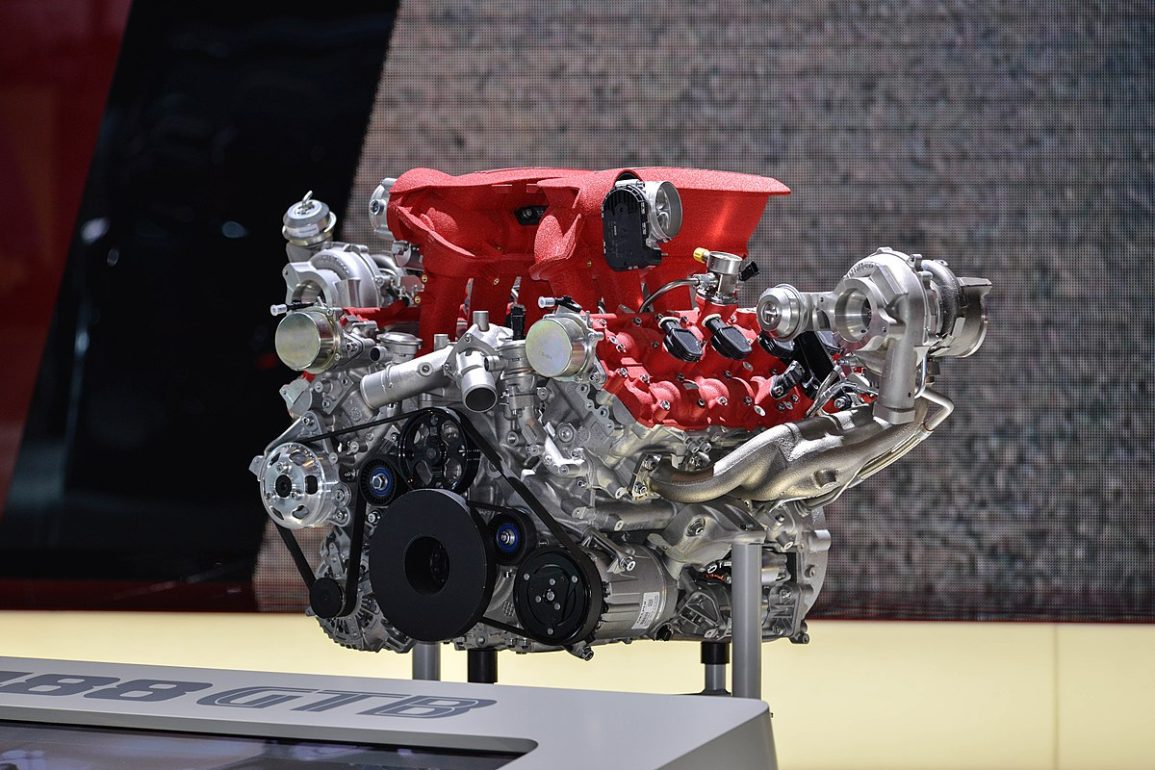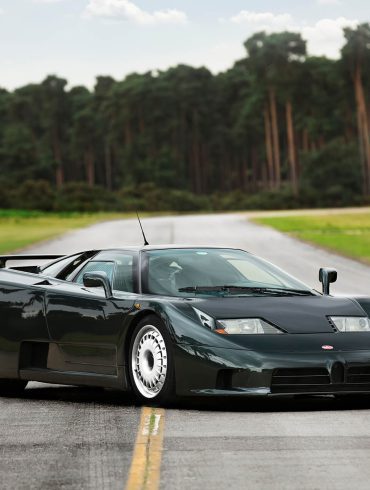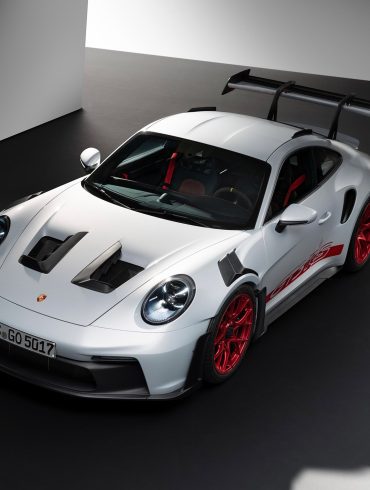The Greatest V8 Engines All Time
The Greatest of the Eight-est. Here Are The Best V8 Engines Ever Made!
by Terence W
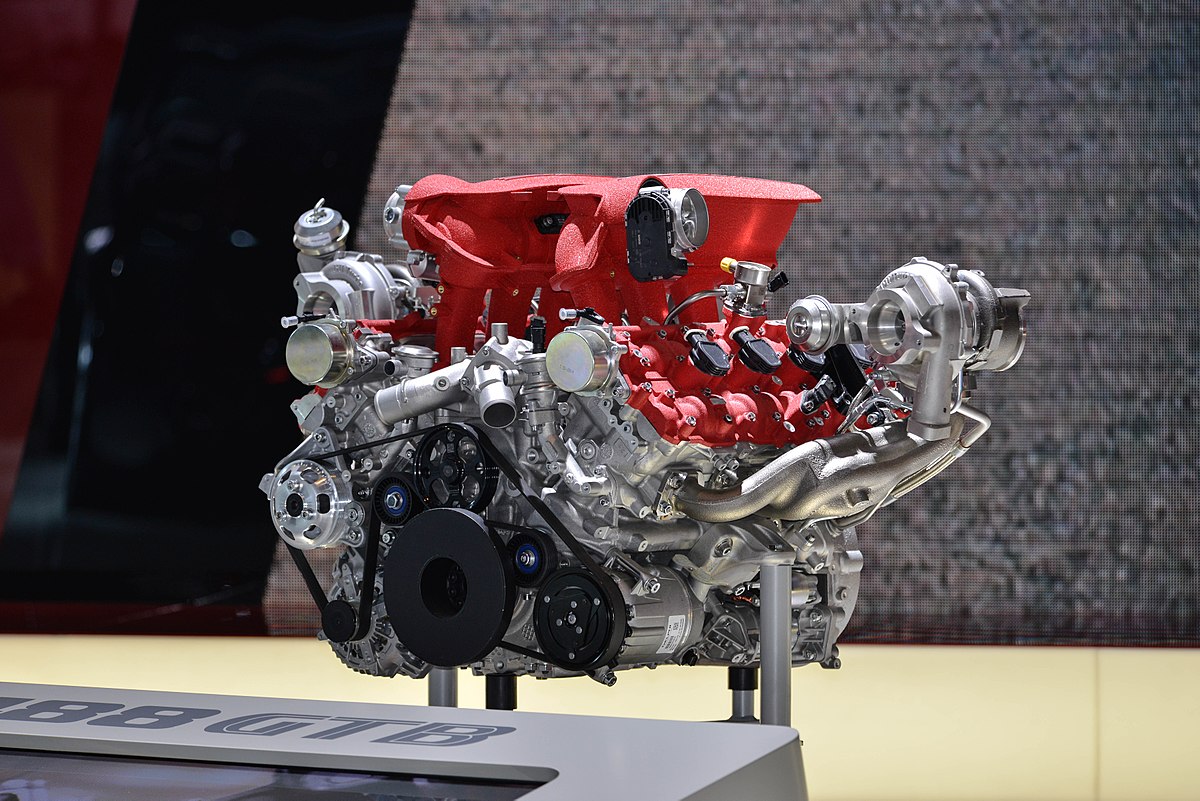
Mercedes-Benz has raised performance and engineering standards with their high-end supercars
About Our Selections
In almost all cases, manufacturers who choose to equip their cars with a V8 engine do so knowingly and deliberately. After all, such engines represent the first big step in crossing over a threshold to where performance becomes the sole focus; efficiency and economy are often not even invited as guests for a ride-along in the back seat.
With a quick glance at the back mirror, those pesky 4-cylinder and 6-cylinder engines begin to disappear into the horizon. Then, with the proverbial “pedal-to-the-medal”, the V8 power plant unanimously declares “all-in” with a loud roar – because this journey is all about thrill-seeking and checking things off the bucket list.
While high-performance V8 engines have normally been reserved for exotics – and muscle cars, in the more distant past – its application has been seen more in the mainstream these days. With the proliferation of automotive technologies, the V8 engine has become a gateway into the world of attainable supercar performance; each new engine is better than the one before it. But if you prefer roaring V10s, or hearty V12s, check these links out. However, if V8s are more your cup of tea, read on.
Ferrari F106
A classic engine from the very start.
Why We Picked It:
The Ferrari Dino engine was a range of V8 (and V6) engines in production for almost forty years and powered a lot of Ferrari cars over the years. It traces its roots right back to prototype racers of the early 1960s. It’s pinnacle was F131 for the Challenge Stradale, displacing 3.6L and with titanium on the inside producing 420hp at a furious 8,500 rpm, it is one of favorite naturally aspirated soundtracks of all time. This legendary V8 was also turbocharged for duty in the epic 288 GTO and F40.
Ferrari’s F106 V8 engine dates as far back as 1973, where it first featured in the Dino 308 GT4. Right from the get-go, it produced an impressive 250 hp from a 2.9L naturally-aspirated engine, which featured a flat-plane crank and dual-overhead cams.
Such was the longevity and capability of the F106 unit, that it continued to be used – with significant updates and revisions along the way, including electronic fuel injection and multi-valve heads – for more than 30 years.
Notable models which were equipped with the engine include the F355, 360 Modena, and arguably the most famous Ferrari of them all; the Ferrari F40, which fashioned a twin-turbocharged version of the F106 producing 471 hp.
The Specs:
90° V8
Production:
1974 - 2004
The Cars:
308 GT4
308 GTB/GTS
208 GT4
208 GTBi/GTSi
208 GTBi/GTSi
208 Turbo
288 GTO
308 GTBi/GTSi
Mondial 8
Mondial qv
308 GTB/GTS qv
3.2 Mondial
328 GTB/GTS
F40
Mondial t
348 tb/ts
GTB/GTS & Spider
F355 GTB/ GTS & Spider
360 Modena & Spider
Challenge Stradale
6.2L Dodge Supercharged Hemi
You can buy one for your own project and it only costs $22k. Yikes.
Why We Picked It:
Dodge’s Hellcat series of cars have really taken the world by storm, offering almost unfathomable power in a non-exotic production vehicle – or any vehicle for that matter. It’s truly a revival of the “American muscle” movement, with the supercharged Hemi able to produce as much as 807 hp and 717 lb-ft of torque via the Dodge Challenger Hellcat Super Stock. Handling, agility, and all that other kind of stuff aside, this makes the Hellcat Challenger/Charger the quintessential American sports car which can be had for well under the 6-figure mark brand new.
The automaker is now offering the 6.2L ‘Redeye’ V8 as a crate engine (aptly nicknamed ‘Hellcrate’) through Mopar. It can be purchased at a starting price of US$21,807.
The ‘Redeye’ version comes with a larger supercharger than the previous Hellcrate engine and has been tuned for more boost, a slightly higher redline, and a host of other improvements. These are what has allowed it to improve from 707 hp and 650 lb-ft of torque to its current 807 hp state. An absolute unit.
Production:
2015 - 2018
The Cars:
Challenger SRT Hellcat
Challenger Hellcat Redeye
Charger SRT Hellcat
Challenger Hellcat Redeye
Cherokee Trackhawk
Durango SRT Hellcat
Ram 1500 TRX
Challenger SRT Demon
BMW S63
S63 is the pinnacle and perhaps one of the most competent engines available today
Why We Picked It:
Like other automakers on this list, BMW is no stranger to producing some of the world’s best V8 engines.
The latest incarnation would be its masterpiece ‘S63‘ – a 4.4L twin-turbocharged engine that produces at least 600 hp and 553 lb-ft of torque in the current-gen BMW M5 sedan.
Though it’s true that this grants the quintessential luxury-performance saloon some serious supercar credentials, a look back to days gone by reminds us that engines such as the ‘S62’ and ‘S65′ deserve just as much recognition for their contribution to the Bavarians’ V8 platform.
Respectively, each engine displaced 4.9L and 4.0L and were both naturally aspirated.
Specs:
Configuration - 90° V8
Displacement - 4.4 L, 3.9 L
Production:
2009 - Present
The Cars:
2019–present F91/92/93 M8
2019–present F91/92 M8 Competition
2010–2013 E70 X5 M
2010–2013 E71 X6 M
2011–2017 F10 M5
2012–2018 F12/13 M6
2013–2018 F06 M6 Gran Coupe
2015–2019 F85 X5 M
2015–2019 F86 X6 M
2018–2023 F90 M5
2018–2023 F90 M5 Competition
2021 F90 M5 CS
2019–present F91/92/93 M8
2019–present F91/92 M8 Competition
2020–present F95 X5 M
2020–present F95 X5 M Competition
2020–present F96 X6 M
2020–present F96 X6 M Competition
Lexus 2UR-GSE
An underrated, naturally aspirated legend
Why We Picked It:
The 2UR-GSE is the latest iteration of Lexus‘ increasingly iconic naturally-aspirated V8 power plant.
Currently reserved for the marque’s high-performance models – such as the IS F, RC F, GS F, LC 500, and brand-new IS 500 – the 5.0L engine blends typical Lexus reliability with a high-revving Japanese character. In its most powerful configuration, the 2UR-GSE produces 475 hp in the Lexus LC 500.
Amidst an ever-changing landscape shifting towards hybridization and electrification, we hope that Lexus’ legendary naturally-aspirated V8 lives on for as long as possible
Much like our other selections, the 2UR-GSE owes much of its distinctions to predecessors such as the 1UZ-FE which debuted in 1989. This 4.0L V8 engine has proven to be bulletproof over the test of time, in addition to the universal recognition it has received for being smooth, refined, and sufficiently powerful for its intended application. It has served as the platform upon which the formidable GSE would eventually be conceived.
Specs:
5.0 L; 303.2 cu in (4,969 cc)
All-alloy DOHC, 4 valves per cylinder
416 bhp - 475 hp
Production Years:
2007 - Present
The Cars:
2007 - 2014 IS F
2015 - present RC F
2015 - 2020 GS F
2017 - present LC 500
2022 - present IS 500 F-Sport
Ferrari F136
dddd
Why We Picked It:
The F136 succeeded the legendary F106, first appearing as a 4.3L naturally-aspirated engine in the 2004 Ferrari F430, producing 483 hp. Like the F106, the F136 would see widespread application throughout the Ferrari lineup; however, it was also featured on a number of Maserati models in concert with the relationship between the two marques.
Most notably, a 454 hp, 4.7L version of the F136 featured on the Maserati GranTurismo and is widely regarded as having one of the best engine/exhaust notes to come out of the V8. The F136 would reach its zenith in the Ferrari 458 Italia Speciale, where it cranked out a massive 597 hp from its 4.5L naturally-aspirated power plant.
Perhaps the most significant (and regretful) fact about the F136, is that it is the last naturally-aspirated V8 engine Ferrari would ever produce. It was replaced by the twin-turbocharged F154 V8 engine in 2015, where it debuted on the Ferrari 488 GTB.
The Specs:
90° V8
4.2L – 4.7L
385 hp – 597 hp
Production:
2002 – 2016
The Cars:
F430
F430 Spider
430 Scuderia
Scuderia Spider 16M
California
458 Italia
458 Spider
458 Speciale
458 Speciale A
McLaren M838T / M840T
This 3.8/4.0 liter has been powering the best McLarens for over a decade.
Why We Picked It:
Despite only producing V8-powered automobiles since as recently as 2011 (via the MP4-12C), you could argue that McLaren‘s engineers are truly the world’s V8 engine artisans, and few would dispute that.
After all, it’s virtually all they know these days, with every single McLaren model – bar the V6-hybrid McLaren Artura – fitted with some adaptation of their M838T or M840T twin-turbocharged V8 motors.
The 3.8L M838T is found in its Sports Series range of cars, which includes the entry-level McLaren 540C and goes all the way up to the indomitable 666 hp McLaren 675 LT. The 4.0L M840T features on all of the Super Series cars, which covers the ‘700 range’ of models, plus the addition of the McLaren GT.
In its Ultimate form, the 4.0L unit – dubbed the M840TR – produces 814 hp in the McLaren Senna GTR. The McLaren Speedtail hybrid ‘hyper GT’ produces some 1,035 hp through the combination of an M840T and electric motor.
Specs:
90° flat-plane V8
3.8 L - 4.0L
DOHC 4 valves x cyl.
493hp - 789hp (3.8)
612hp - 814hp (4.0)
Production Years:
2011 - 2021 (3.8)
2017 - Present (4.0)
The Cars:
2011 - 2014 MP4-12C
2014 -2017 650S
2015 - 2017 675LT
2013 - 2015 P1
2015 - 2017 P1 GTR/LM
2016 -2021 240C
2016 -2021 570C
2018 - 2021 600LT
2020 - 2021 620R
2017 - 2023 720S
2020 - 2023 765LT
2023 - present 750S
2018 - 2020 Senna/GTR/GT LM
2020 Elva
2020 Speedtail
2019 - 2024 GT
2024 - Present GTS
GM Small Block LT1/LT2
fff
Why We Picked It:
Introduced in 2014 for the C7 Corvette, the 6.2L naturally-aspirated V8 LT1 engine is part of GM’s 5th-generation small block engine family.
It continues to be used on the present-day Camaro, with a new version of the engine – known as the LT2 – carrying on the bloodline via the brand new mid-engine C8 Corvette. The LT2 retains the 6.2L capacity but is more powerful than the LT1, producing at least 495 hp and 470 lb-ft in its latest configuration.
This was achieved by designing more efficient air-intakes sand exhaust manifolds, while also featuring a better lubrication system and more resilient camshaft. While it’s not a monster-out-of-the-box like say, Dodge’s Hellcat engine, the lightweight naturally-aspirated powerplant remains perfectly suited for what the Corvette is the best at delivering – brilliant all-around performance at a fraction of the cost of comparable options.
The still-relevant LT1 is now being offered as a crate engine via GM’s performance division, with its 460 hp on tap for under US$10,000. Project car, anyone?
The LT2 engine debuted in the 2020 Corvette Stingray as the successor to the LT1. It was designed specifically with mid-engine placement and dry-sump lubrication in mind.
Specs:
90° V8
4,301 cc, 5,328 cc, 6,162 cc, 6,564 cc
OHV 2 valves per cylinder
455hp - 495 hp
Production Years:
2014 - Present C8
The Cars:
2014 - 2019 C7 Corvette
2016 - 2024 Camaro SS
2020 - 2024 Camaro LT1
2020 - Present C8 Corvette
Audi 4.2L FSI
A sweet revving V8 that powered Audi's finest sports cars.
Why We Picked It:
When Audi’s 4.2L FSI V8 engine was introduced, it was a bit of a departure from what Audi enthusiasts had grown accustomed to over the years.
As one of the marques which helped to proliferate the use of turbochargers on production cars, the aforementioned engine first appeared in the 2006 Audi RS4 as a high-revving naturally-aspirated power plant.
Over time, it proved to be a fan-favorite in spite of its lack of forced induction and featured on such models as the RS5 and mid-engined R8.
As a naturally aspirated unit, the FSI V8 was able to rev up to 8,250 rpm and had a distinctively exotic exhaust note, regardless of the model it was mounted in.
The engine remained naturally-aspirated up until its use in the 444 hp Audi RS5; since then, recent iterations of the engine are now turbocharged and produce up to 600 hp.
Specs:
4,163 cc (254.0 cu in)
90° V8 engine
345 hp - 444 hp
The Cars:
Audi Q7
Audi A6
Audi S5
Audi RS 4
Audi R8
Audi RS 5
Mercedes-AMG M178
The second variation in the family, geared toward higher performance and motorsport.
Why We Picked It:
The modern-day Mercedes-AMG line-up is blessed with their omnipotent ‘M178’ 4.0L twin-turbocharged V8, which itself deserves all the plaudits and is a shoo-in for selection.
While it’s the most advanced iteration of the automaker’s V8, our personal favorite would have to be the ‘M156’ 6.2L V8 first powered the 467 hp naturally-aspirated C63 AMG. Like its successor, the M156 would feature in almost every Mercedes-AMG model of that era, including the SL63.
The ultimate version of this V8 motor would be the ‘M159’, which was equipped in the automaker’s flagship SLS supercar, producing 622 hp.
The SLS has since been succeeded by the Mercedes-AMG GT Black Series, which produces 720 hp from its twin-turbocharged ‘M178’, and recently set the new production car lap record at the Nürburgring.
Specs:
Cylinder arrangement V8
Cylinder angle 90°
3,982 cc (4.0 L; 243.0 cu in)
Production Years:
2015 - Present
The Cars:
Mercedes-AMG GT
Mercedes-AMG GT S
Mercedes-AMG GT C
Mercedes-AMG GT R
Mercedes-AMG GT Black Series
Mercedes-AMG GT Track Series
Ford ‘Voodoo’ Flat-Plane
An awesome development of the Coyote engine
Why We Picked It:
The ‘Voodoo’ engine produced by Ford is a 5.2L naturally-aspirated V8 which was made especially for cars such as the 526 hp Mustang Shelby GT350 and GT350R. Suffice to say, the Voodoo was a match made in heaven for the line-up’s most balanced and track-focused Mustang models.
By utilizing a flat-plane crankshaft, the engine weighs less and revs faster and higher (to 8,250 rpm) than the otherwise standard engines in other models. Its configuration also gives it an almost-exotic exhaust note, border-lining on ‘un-American’ – but owners won’t mind, as their domestic car hangs just fine with the exotics and other high-end sports cars on the race-track.
Following the template of past flat-plane V8 engines, the Voodoo applies similar principles as engines that once powered hot-rods and muscle cars back in the 20th century – with impressive bang-for-buck, the engines produced big horsepower at a fraction of the cost of what was used in European sports cars and even domestic rivals. This provided owners with a rightfully potent automobile, and extra money left in the bank. It’s hard to argue with that!
Specs:
5.2 L; 315.1 cu in (5,163 cc)
526 hp (392 kW) at 7500 RPM
429 lb⋅ft (582 N⋅m) of torque at 4750 RPM
Redline 8250 RPM
Production Years:
2015 - 2020
The Cars:
2015 - 2020 Mustang Shelby GT350/350R
Toyota UZ-FE
The tuners favorite.
Why We Picked It:
The Toyota UZ-FE engine family is a series of highly reliable and robust V8 engines that were produced by Toyota from the early 1990s through the 2010s.
Known for their smooth performance, durability, and impressive engineering, the UZ-FE engines became a benchmark in the luxury and performance market, powering a variety of Toyota and Lexus models. These engines were designed to offer a balance of power, refinement, and longevity, making them popular not only in their original applications but also among car enthusiasts and tuners.
The UZ-FE engines are highly regarded for their engineering excellence, featuring forged steel crankshafts, durable connecting rods, and aluminum alloy construction that contribute to their longevity and reliability.
They were designed with a focus on balance and smooth operation, with the 1UZ-FE, in particular, becoming legendary for its near bulletproof reliability, even in high-mileage vehicles. Their adaptability, strong aftermarket support, and proven performance have made them a popular choice for engine swaps in various custom builds, from sports cars to off-roaders.
Specs:
90° V8
DOHC 4 valves x cyl. w/VVT-i
256–500 hp
260-325 lb-ft
Production Years:
1989 - 2013
The Cars:
1989–2000 Lexus LS 400/Toyota Celsior
1989–2002 Toyota Crown/Toyota Crown
1991–2000 Lexus SC 400/Toyota Soarer
1992–1997 Toyota Aristo
1997–2000 Lexus GS 400
1995–1997 SARD MC8/MC8-R
2002–2004 Lexus GX 470
1998–2005 Lexus LX 470
1998–2005 Toyota Land Cruiser
2002–2004 Toyota 4Runner
1999–2004 Toyota Tundra
2000–2004 Toyota Sequoia
2000-2006 Lexus LS 430
2000-2007 Lexus GS 430
2001-2010 Lexus SC 430/Toyota Soarer
2004-2013 Toyota Crown Majesta
2003-2005 Toyota Supra GT500
2006-2008 Lexus SC 430 GT500
Mercedes-Benz M156
A naturally aspirated V8 wonder with the best sound in the world.
Why We Picked It:
The Mercedes-Benz M156 engine is a highly acclaimed and powerful naturally aspirated V8 engine developed by Mercedes-AMG, marking the brand's first in-house engine project. Introduced in 2006, the M156 set a new benchmark for performance, technology, and engineering, and became the heart of various high-performance AMG models over its production run. Known for its incredible power, distinctive exhaust note, and robust design, the M156 remains one of the most revered engines in the history of AMG.
The M156 is a 6.2-liter V8 engine, despite often being mistakenly referred to as a "6.3-liter" due to AMG’s nod to the legendary 6.3-liter engine used in the 1960s Mercedes 300 SEL 6.3. This engine was the first engine to be entirely developed by AMG without relying on Mercedes-Benz’s existing designs, demonstrating AMG’s engineering prowess and independence. This engine could rev up to 7,200 rpm, a remarkable feat for a V8 of its size, and it produced an unmistakable and thrilling exhaust note that quickly became an AMG signature.
The M156 engine holds a special place in AMG’s history as the brand's first completely in-house developed engine. The M156’s production ended around 2014, as AMG transitioned to smaller, turbocharged engines, but its legacy continues to be celebrated. For many, the M156 represents the pinnacle of naturally aspirated V8 engineering and embodies the pure, unfiltered performance that AMG is known for.
Specs:
Naturally aspirated 90° V8
6.2 L (6,208 cc)
DOHC 4 valves x cyl.
451–622 hp
465–479 lb⋅ft
Production Years:
2006-2014
The Cars:
2006–2011 E 63 AMG
2006–2011 ML 63 AMG
2007 R 63 AMG
2006–2011 S 63 AMG
2006–2011 CL 63 AMG
2006–2010 CLK 63 AMG
2006–2010 CLS 63 AMG
2007–2015 C 63 AMG
2008–2011 SL 63 AMG
BMW M S65
BMWs high-revving V8 masterpiece.
Why We Picked It:
The BMW M S65 engine is a high-revving, naturally aspirated V8 that became one of the most celebrated powerplants in BMW M's history. Introduced in 2007, the S65 was developed exclusively for the E92 and E90 M3 models, delivering a unique blend of power, responsiveness, and an exhilarating exhaust note that made the M3 one of the most revered sports cars of its time. Known for its advanced engineering, motorsport pedigree, and high-revving character, the S65 engine remains a favorite among enthusiasts who appreciate the raw, unfiltered driving experience it offers.
The S65 engine is a 4.0-liter V8 that represents BMW M's dedication to creating high-performance, naturally aspirated engines. Derived from the legendary S85 V10 found in the BMW E60 M5, the S65 retains the same high-revving DNA but in a more compact and lighter V8 configuration. One of the standout features of the S65 is its ability to rev freely and reach high RPMs, which is unusual for a V8. This gives the engine a thrilling and engaging character, delivering power in a linear, predictable way, with peak power arriving at an astonishingly high 8,300 rpm. The high-revving nature and razor-sharp throttle response make the S65 feel incredibly alive and responsive, providing an authentic connection between the driver and the engine.
The BMW M S65 engine is often regarded as one of the last great naturally aspirated V8 engines in an era that has largely shifted toward turbocharging and electrification. Its raw, unfiltered performance make it a beloved powerplant among enthusiasts.
Specs:
Naturally aspirated 90° V8
4.0 L (3,999 cc), 4.4 L (4,361 cc)
DOHC w/ VVT
414hp - 444hp
295 lb-ft - 325 lb-ft
Production Years:
2007-2013
The Cars:
2008-2013 BMW E90/92/93 M3
2010-2011 BMW E92 M3 GTS
2011-2012 BMW E90 M3 CRT sedan
Jaguar AJ-V8
A versatile V8 powering generations of fast Jags (and more).
Why We Picked It:
The Jaguar AJ-V8 engine is a versatile and advanced V8 engine family that has powered a range of Jaguar and Land Rover vehicles since its introduction in the mid-1990s. Known for its smooth performance, reliability, and adaptability, the AJ-V8 has evolved over the years, incorporating modern technology and engineering to deliver impressive power across various applications. As one of Jaguar's most successful engines, the AJ-V8 has proven itself to be a cornerstone of the brand's performance and luxury offerings.
The AJ-V8 engine was introduced in 1996, initially as a 4.0-liter powerplant in the Jaguar XK8 and XJ8 models, marking a significant shift for Jaguar from the classic inline-six and V12 engines that had defined the brand in previous decades. It was developed to replace the aging engines with a more modern, efficient, and compact design. The engine was designed with adaptability in mind, allowing Jaguar to increase displacement, add supercharging, and incorporate new technologies over its production lifespan.
The AJ-V8 was designed with an all-aluminum construction, featuring an aluminum block and heads, making it lightweight yet strong. It employed a DOHC (Dual Overhead Camshaft) configuration with four valves per cylinder, contributing to smooth power delivery and improved efficiency.
The Jaguar AJ-V8 engine family has earned a reputation for being both reliable and capable, delivering smooth, refined power across a wide range of vehicles. It has powered some of the most iconic Jaguar models of recent decades.
Did You Know:
3.0L to 5.0L
90° V8
DOHC 4 valves x cyl. with VVT
Production Years:
1996 - Present
The Cars:
1997–1998 Jaguar XJ8
1997–1998 Jaguar XK8
1999–2003 Jaguar XJ8
1999–2003 Jaguar XK8
2000–2002 Jaguar S-Type
1998–1999 Jaguar XJR
1998–1999 Jaguar XKR
2000–2003 Jaguar XJR
2000–2003 Jaguar XKR
1997–2003 Jaguar XJ8
2002–2007 Jaguar XJ8
2003–2006 Jaguar XK-series
2006–2008 Jaguar XK-series
2002–2008 Jaguar S-Type
2004–2009 Jaguar XJ8
2008–2010 Jaguar XF
2004–2009 Jaguar XJR/Super V8
2003–2006 Jaguar XKR
2006–2008 Jaguar XKR
2003–2008 Jaguar S-Type R
2008–2010 Jaguar XF
Chevrolet LT6 5.5L
Chevy gets exotic. More reminiscent of a Ferrari than a traditional American V8.
Why We Picked It:
The Chevrolet LT6 5.5L engine is a high-performance, naturally aspirated V8 that represents the pinnacle of Chevrolet's engineering and innovation. Developed specifically for the 2023 Chevrolet Corvette Z06, the LT6 is the most advanced and powerful naturally aspirated V8 engine ever produced by General Motors, delivering an exceptional blend of power, technology, and precision. As the heart of the latest Z06, the LT6 offers an exhilarating driving experience and showcases Chevrolet’s commitment to pushing the boundaries of performance.
The LT6 is a 5.5-liter flat-plane crank V8 engine that stands out as a truly unique powerplant in the American automotive landscape. Unlike traditional cross-plane crank V8s, the LT6's flat-plane design enables it to rev higher, delivering a race-inspired, thrilling performance that rivals some of the best naturally aspirated engines in the world.
The LT6 engine produces a remarkable 670 horsepower, making it the most powerful naturally aspirated V8 ever installed in a production car. One of the most defining characteristics of the LT6 is its flat-plane crankshaft design, a feature more commonly found in high-performance European sports cars and race engines. The flat-plane crankshaft allows the engine to rev faster and higher than a traditional cross-plane crank V8, resulting in an incredibly responsive throttle, less vibration, and a lighter rotating assembly. This design contributes to the LT6’s ability to reach a redline of 8,600 rpm.
Specs:
5.5 liters (5,532 cc)
V8 with a flat-plane crankshaft
DOHC with four valves per cylinder
8,600 rpm
670 hp at 8,400 rpm
460 lb-ft at 6,300 rpm
Production Years:
2023-present
The Cars:
2023 Chevrolet Corvette Z06
Ferrari F154
Ferrari turns up the volume thanks to turbocharging
Why We Picked It:
First seen on the 2014 Ferrari California T, the F154 is Ferrari’s turbocharged V8 engine for the latest generation of cars. Ferrari’s naturally aspirated era V8s won a lot of awards and it looks like the switch to turbos hasn’t slowed down the folks at Maranello.
The F154 twin-turbocharged flat plane V8 has won numerous accolades including the Engine of the Year three years in a row. In 2018, the 3.9-litre twin-turbo V8 found in the Ferrari 488 Pista again won the international Engine Of The Year Award, while the turbo-charged V8 is voted the best engine of the last 20 years. That says a lot when it comes from the guys who rate engines for a living. The 3.9-litre twin-turbo V8 in the Ferrari 488 Pista makes a whopping 711 bhp of peak power and an impressive 770 Nm of peak torque. The 488 Pista goes from 0-100 kmph in just 2.85 seconds and on to a top speed of 340 kmph! 0-200 kmph comes up in just 7.5 seconds.
The F154 V8 engines have a 90° angle between the cylinder banks, aluminium block and heads. The forced induction system uses two parallel twin-scroll water-cooled turbochargers supplied by IHI and two air-to-air intercoolers. The valvetrain consists of 32 valves actuated through roller finger followers by two overhead camshafts per bank; the timing chain is located on the flywheel side. All versions feature gasoline direct injection and continuously variable valve timing on both intake and exhaust side.
Ferrari’s version (this engine is also used by Maserati and Alfa) has flat plane crankshaft and dry sump lubrication. In order to obtain equal length pipes, the exhaust manifolds are manufactured from multiple welded cast steel pieces; the turbocharger housing uses a similar three-piece construction.
Specs:
90° Twin Turbo V8
2.9L 3.8L 3.9L, 3.99L
552 hp – 769 hp
Production:
2013 – Present
The Cars:
California T
GTC4Lusso T
Portofino
488 GTB
488 Spider
488 Pista
F8 Tributo
F8 Spider
SF90 Stradale
SF90 Spider


